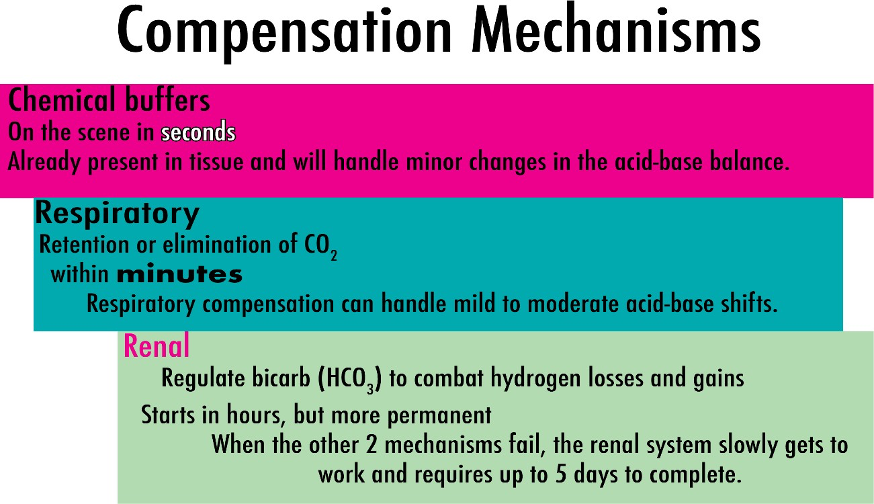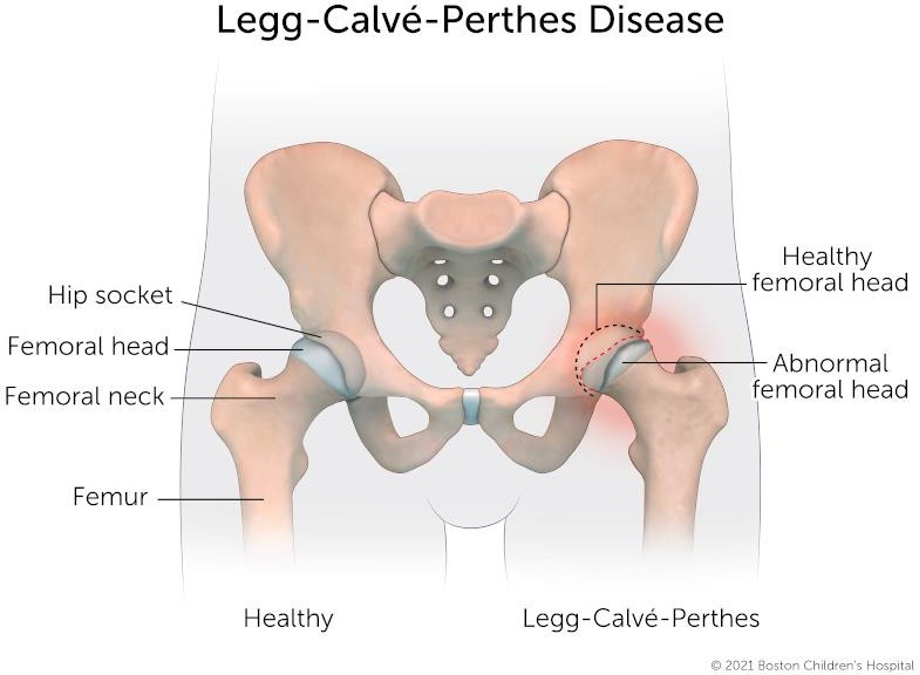The parents of a child with acid-base imbalance ask the nurse about mechanisms that regulate acid-base balance. Which statement by the nurse accurately explains the mechanisms regulating acid-base balance in children?
The cardiovascular and integumentary systems
The respiratory, renal, and chemical-buffering systems
The kidneys balance acid: the lungs balance base.
The skin, kidney, and endocrine systems
The Correct Answer is B
The regulation of acid-base balance in the body involves multiple systems working together. The respiratory system, renal system, and chemical-buffering systems play key roles in maintaining the balance of acids and bases in the body.
The respiratory system helps regulate acid-base balance through the control of carbon dioxide (CO2) levels in the blood. By adjusting the rate and depth of breathing, the respiratory system can increase or decrease the elimination of CO2, which affects the pH of the blood.
The renal system (kidneys) plays a crucial role in regulating acid-base balance by controlling the excretion and reabsorption of hydrogen ions (H+) and bicarbonate ions (HCO3-) in the urine. The kidneys can excrete excess acids or bases to help maintain the body's pH within a normal range.
The chemical-buffering systems involve various chemical compounds in the body that can absorb or release hydrogen ions to help maintain pH balance. Examples of chemical buffers include bicarbonate ions (HCO3-), phosphate ions (HPO4-), and proteins.
the cardiovascular and integumentary systemin (option A) is incorrect because they, are not primarily responsible for regulating acid-base balance in the body.

Nursing Test Bank
Naxlex Comprehensive Predictor Exams
Related Questions
Correct Answer is B
Explanation
Legg-Calve-Perthes disease, also known as Perthes disease, is a childhood condition that affects the hip joint. It occurs due to a disruption in the blood supply to the femoral head (epiphysis), which can lead to bone death (avascular necrosis) and subsequent deformity of the femoral head.
It is essential for parents to understand that Legg-Calve-Perthes disease is not an acute illness that lasts for a short duration (Option A). It is a chronic condition that typically progresses over a period of months or years.
stating that it is caused by a virus, in (option C) is incorrect. The exact cause of Legg-Calve- Perthes disease is not fully understood, but it is not caused by a viral infection. It is believed to be related to multifactorial factors, including genetic and vascular factors.
stating that it primarily affects adults, in (option D) is incorrect. Legg-Calve-Perthes disease predominantly affects children, typically between the ages of 4 and 8 years old, during the period of rapid growth.

Correct Answer is A
Explanation
A change in status that should alert the nurse to increased intracranial pressure (ICP) in a child with a head injury is confusion and altered mental status. As intracranial pressure increases, it can affect brain function and lead to neurological changes, including confusion, disorientation, irritability, decreased level of consciousness, or other alterations in mental status. These changes indicate that the brain is being compressed and compromised, and immediate intervention is required.
Option B, increased diastolic pressure with narrowing pulse pressure in (option B) is incorrect because it, can be a sign of increased ICP, but it is not specific to head injuries and can be influenced by other factors such as pain, anxiety, or systemic conditions. It is important to consider the overall hemodynamic status of the child and assess for additional signs and symptoms of increased ICP.
irregular, rapid heart rate in (option C), can be a sign of increased ICP, but it is not specific to head injuries and can be influenced by other factors such as pain, anxiety, or other medical conditions. Assessment of heart rate should be considered along with other signs and symptoms of increased ICP.
rapid, shallow breathing, in (option D) can be a sign of increased ICP, but it is not specific to head injuries and can be influenced by other factors such as pain, anxiety, or respiratory conditions. Respiratory assessment should be considered along with other signs and symptoms of increased ICP.
Whether you are a student looking to ace your exams or a practicing nurse seeking to enhance your expertise , our nursing education contents will empower you with the confidence and competence to make a difference in the lives of patients and become a respected leader in the healthcare field.
Visit Naxlex, invest in your future and unlock endless possibilities with our unparalleled nursing education contents today
Report Wrong Answer on the Current Question
Do you disagree with the answer? If yes, what is your expected answer? Explain.
Kindly be descriptive with the issue you are facing.
